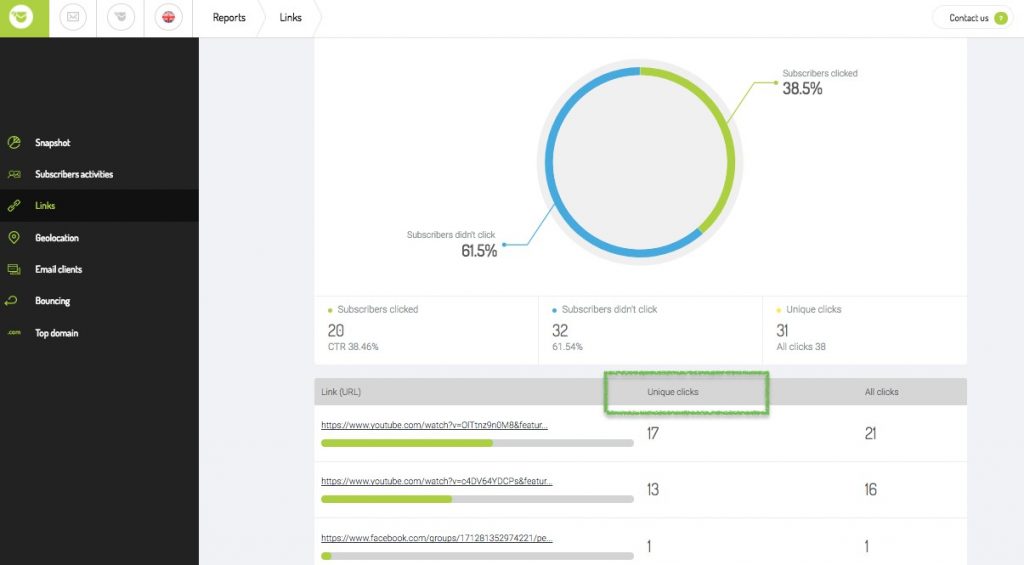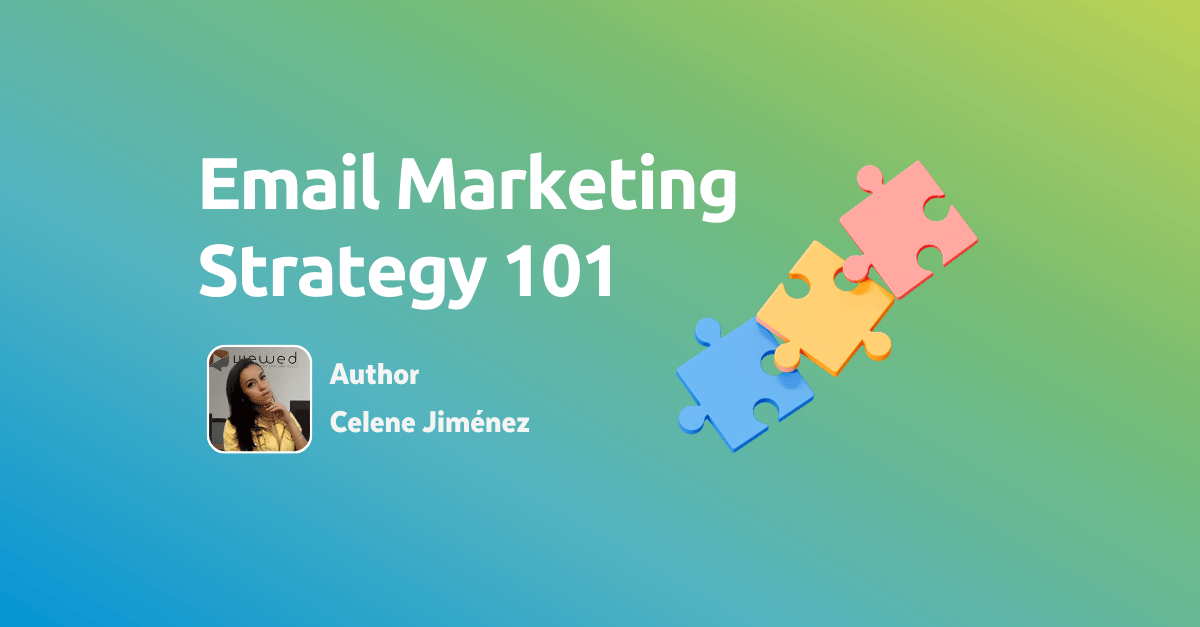Email marketing is a must-have for any online business. If your emails are engaging and relevant, this communication channel can give you an excellent Return on Investment (RoI). Research from Econsultancy showed that 73% of respondents rated email as "Excellent/Good" for delivering RoI, and according to the DMA's Email Marketer Tracker it’s ratio can hit an astounding 30:1.
If you’re sending promotional emails your main goal is to find the appropriate metrics to measure your efforts. These metrics are a necessity to put a light on the effectiveness of your campaigns. You might be spending plenty of time looking up email inspirations and designing your campaigns, but as long as you do not see results in your campaign’s reports, you won’t be able to determine how you're progressing towards your marketing goals.
Take a look at the 3 most popular email metrics you should be tracking to make sure your email program is effective and scalable. Let’s dive in!
Open Rate (OR)
What is OR?
Open Rate expresses the number of unique message opens as a percentage of all messages delivered (non-bounced total) or as a percentage of all messages sent. Email marketing providers calculate Open Rate by taking the number of tracked opens and dividing it by non-bounce total or email sent total. You can choose how you want your ORs to be calculated in your email system settings panel.
Remember that your email won’t be counted as an open until the recipient enables the images in your email to be displayed, because the default setting on most email programs is to block images until the user clicks to enable them.
Your email system should insert a blank image in every email to ensure that open tracking is possible. Each blank email is tied to the address it was sent to, making it easy to identify which subscribers opened the message and which didn’t. If you send an all-text campaign, without any links to other pages, it will also be impossible to accurately calculate the OR.
What does OR tell you?
Open Rate gives you an idea of how your campaigns are performing with a particular list. If an OR is strong, it usually means elements visible in the email envelope resonate with your audience.
Open Rate can be a quite misleading metric if calculated alone. Analyzed without a context of Click Through Rate or Unsubscribe Rate doesn’t say much for further optimization.
- Click to Open Rate (CTOR)
Tells you how many subscribers who opened your email also clicked on the link or links inside the message. This is a much more accurate measure of how effective your campaign was. It not only shows that you grabbed their attention with a compelling subject line, but also that you were able to convert them onto your landing page.
- Unsubscribe to Open Rate (UTOR)
Tells you how many subscribers opted-out from your mailing list after opening a given campaign. A high UTOR is a sign that, despite being encouraged to open your messages, subscribers are disappointed with its content.
How to improve your OR?
Litmus and Fluent conducted a survey asking responders what elements from the email envelope convince them to open promotional emails:
- Sender or from name was important for 42%
- Subject line was important for 34%
- Preview text was important for 24%

It’s not only the subject line that influences your ORs. All together, sender name, subject line and a preview text helps your subscribers decide whether the content of your email is of interest to them. And actually, due to a growing number of recipients opening emails on mobile devices where the sender name has a prominent position, this factor comes out as the most important when making a decision to open or not open a given email.
Sender name is the equivalent of trust in the eyes of your subscribers. Being a trusted and well-known sender has the biggest impact on your open rate. You should use and easy to identify sender name with a name that you don’t plan to change - this really helps building a lasting relationship with your recipients.
I recommend you to read the article about 5 Things You Must Do to Improve the Open Rates of Your Email Campaigns to make sure you’re not wasting your marketing budget on sending emails which are never opened.
Click Through Rate (CTR)
What is CTR?
Click Through Rate is the number of unique subscribers who click on one or more links in your email expressed as a percentage of total tracked opens. That’s why your CTR never exceeds the number of tracked opens.
There can be more clicks in your campaign in total, if your subscribers click the same link multiple times. Your email system should show you the click distribution in the campaign’s report section.

What does CTR tell you?
CTR is a "day-to-day" email marketing metric which you should be tracking and optimizing. It is one of the main measurements of how engaged your subscribers are. It tells you how many subscribers were convinced to click and learn more about your message.
A high CTR confirms that you presented a relevant message to your individual subscribers. Reaching out to relevant people with something they want to read and engage with should be the main goal of your each and every email campaign.
How to improve your CTR?
Email Marketing Trends Survey asked email marketers what do they find the most effective/the most difficult when it comes to improving their Click Through Rates.
Meaningful CTA offers and segmentation, together with personalization hit the top 3, being both effective and quite difficult. If you are not hitting the mark with your CTRs and you see room for improvement it’s best to start with optimizing your CTAs.
Effective CTA is not only about designing visible and distinctive buttons that make it clear that they are interactive and clickable. This is the “Effective CTA 101” and I hope you know and do so already. When it really comes to optimizing conversion, the copy of your CTA seems to play crucial role. These are the words on your button that inform and encourage people to act.
Choose your words on the basis of how they speak to the needs and interests of customers, and not just on how they can help you make a sale and focus on the benefit. At the same time be specific and exactly tell your subscribers what you want them to do.
In order to really encourage them to take action create a feeling of ownership by using language that implies your audience already has the product. This is what Unbounce did and managed to increase their CTR by 90%. The only thing they did was to change the possessive determiner “you” to “my”.

Email Deliverability
What is Email Deliverability?
The effectiveness of your email marketing is diminished if your messages land in the spam folder or get blocked by spam filters. If you can’t get into your subscribers' inboxes, you simply can’t be successful at marketing communication via email.
You should always keep an eye on your email deliverability to make sure your sender reputation is high and your campaigns are reaching your subscribers. Deliverability is complex and can be determined and affected by multiple factors. This is a subject for a separate article, which is why I’ll recommend you read this article and find out what to measure to get relevant insights on your deliverability.
How to check your Email Deliverability?
Strong Sender Score is an important factor that will help you evaluate your reputation. It operates on a scale from 0-100, with the best-in-class senders typically found in the 90-100 bracket, and enjoying average Inbox Placement Rates (IPRs) of 95+%. You can find out what the Sender Score for your email program looks like here.
How to improve your Email Deliverability?
You should always be proactive about your Email Deliverability, otherwise your email marketing can end up being just a waste of time and money. The most important factors that determine if your emails are being delivered are:
- spam complaints,
- spam traps,
- unknown users,
- good sending infrastructure,
- presence on whitelists/blacklists,
- and subscriber engagement.
Let’s think of how you can avoid spam complaints which are a great negative signal for spam filters and should be prevented as much as possible.
- Never ever buy, rent, borrow or scrap email lists! You know nothing about email addresses included there and you’re risking a lot.
- Make sure you are collecting quality subscribers by using double-opt in method. Only interested leads make an effort to confirm their opt-in, therefore your list is filled with people who want to hear from you, not robots nor spam traps.
- Always provide subscribers with a seamless unsubscribe process. Make your unsubscribe link prominent in every campaign. Let’s face it, there will always be subscribers willing to opt out, so why risk your sender reputation by making the process difficult to perform.
- Leverage Welcome Email and add whitelist instructions to there and include an email preference center to immediately start segmenting your list according to data you gather for a greater relevance.
- Inform your subscribers about how often you plan to email them and pay attention to how frequently you are sending email and what kind of responses you get.
Is deliverability still a tricky subject for you? Find out about the myths and facts on email deliverability here.
Wrap up
The 3 metrics described above are a must-have in your email marketing activities. Sending your email campaigns without tracking is like driving your car with your eyes closed. You’re not really sure where you are going. If you liked the article tell us what email metrics you find important in the comment section below.



-1.png)
